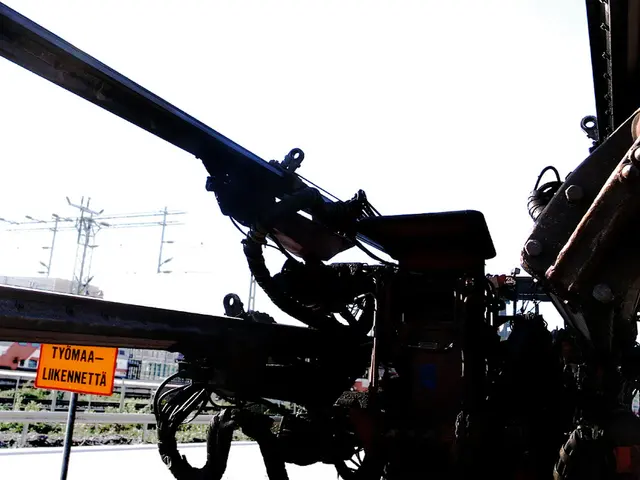Boeing accelerates solar array construction by half via 3D printing technology
In a series of exciting developments, the world of aerospace continues to push the boundaries of innovation.
Boeing's Leap in 3D Printing
Boeing has made significant strides in the realm of 3D printing, incorporating over 150,000 3D printed parts across its portfolio. One of the most notable advancements is the printing of panels with harness paths and attachment points directly into each panel. This design replaces dozens of separate parts, long-lead tooling, and delicate bonding steps with one strong, precise piece. The innovation delivers up to a 50% improvement in production speed compared to current cycle times.
Moreover, Boeing is developing 3D printed solar arrays, with the first modules set to fly Spectrolab solar cells aboard small satellites built by Millennium Space Systems, targeting market availability for 2026. The new array approach is designed to scale from small satellites to larger platforms, including Boeing 702-class spacecraft.
Boeing's Space Mission Systems
Both Spectrolab and Millennium Space Systems are part of Boeing's Space Mission Systems organization. Spectrolab, with its robot-assisted assembly and automated inspection, further reduces handoffs, improving speed and consistency. Boeing's 3D printed solar array substrate shortens composite build times by up to six months on a typical solar array wing program.
NASA's Artemis III Lunar Mission
On the space exploration front, NASA has begun assembling the Space Launch System (SLS) rocket for the Artemis III lunar mission at Kennedy Space Center in Florida. The agency is working tirelessly to prepare for this historic mission.
Orbex's UK Orbital Launch
In another exciting development, Orbex has successfully completed its first full simulation of the Prime vehicle launch. The successful launch simulation marks a key technical milestone for Orbex as it prepares to deliver orbital launch services from the UK next year.
The X-37B Orbital Test Vehicle's Eighth Mission
The X-37B Orbital Test Vehicle, an unmanned spaceplane developed for the United States Air Force, has launched on its eighth mission. The vehicle launched aboard a SpaceX Falcon 9 rocket from Kennedy Space Center in Florida and is now in orbit, performing well, and undergoing routine system checks.
Woodward Inc's Precision Manufacturing Facility
In addition to these space-related advancements, Woodward Inc is planning to build a precision manufacturing facility in Greer, South Carolina, in Spartanburg County. The exact nature of the products to be manufactured at this facility is yet to be announced.
Boeing's New Engineering Center
Lastly, Boeing has launched its new Engineering Center within the Cici & Hyatt Brown Center for Aerospace Technology at Embry‐Riddle Aeronautical University's Research Park. This move underscores Boeing's commitment to fostering innovation and collaboration in the aerospace industry.
These developments highlight the rapid pace of innovation in the aerospace industry, with 3D printing playing a significant role in streamlining production processes and pushing the boundaries of what is possible in space exploration.








